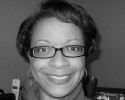As Diversity of Students Increases, College Rises to the Occasion
By Sonya Stinson
April 5, 2016
Northeast Wisconsin Technical College has taken steps to address inclusion and achievement in an increasingly diverse student body
In 1997, when Jeff Rafn became president of Northeast Wisconsin Technical College (NWTC), in Green Bay, minority students made up 17 percent of the local public-school system.
“Just this year, that system has now become majority-minority,” Rafn says. The largest ethnic groups are Latino, followed by Native American and Hmong.
The rising diversity of the community it serves prompted NWTC to implement several initiatives under Rafn’s leadership that promote inclusion and enhance the success of minority students. For these efforts, INSIGHT Into Diversity magazine honored Rafn with a 2016 Giving Back Award, which recognizes college leaders who go above and beyond in supporting their institution and community.
“We started from this notion that we believe that every single student will succeed; not that they can succeed, but that they will succeed,” Rafn says. “So the challenge we faced as a college was, how are we going to make that real?”
Programs for minority students
While the general population of the Green Bay area is largely white, it has seen some significant demographic changes over the last couple of decades. Historically, Native Americans made up the largest minority. The campus sits on land that was purchased from the Oneida nation, and there is an Oneida reservation nearby.
About 25 years ago, Southeast Asians, particularly Hmong, began settling in the area. Later, Latinos came to work in the local dairy industry. African-Americans moving from the Milwaukee area account for a growing but still relatively small segment of the region’s population.
Most of the college’s support services are available to all students. These include academic support; a food assistance program called Shared Harvest; a program that provides interview clothes for job-hunting students; and a fund for emergency expenses. The college has also hired licensed counselors and implemented an early alert system to identify struggling students.
A major focus of NWTC’s diversity-related programs has been on closing the achievement gap between minority and white students. For example, the college created a mentoring program for black students.
“We felt if we could get them paired with other African-American role models, they could be more successful,” Rafn says. “It’s been working out very well. The biggest challenge for us, as it is usually with mentoring programs, is bringing it to scale.”
For English-language learners, the college has created bridge programs that put English teachers and occupational-program instructors in the same classrooms. A recent cohort of Latino students graduated from the medical assistant program.
“Now they can speak English, and they can be medical assistants. And because they’re bilingual, they get hired at a premium rate of an extra $2.00 an hour,” Rafn says. The college has also created bridge programs in welding and automotive training.
NWTC has seen course success rates improve for several targeted groups. Between academic years 2012–13 and 2014–15, the course success rate for black students rose from 57 percent to 67 percent. Over the same period, course success for Native American students increased from 69 percent to 72 percent; for Latino students, course success increased from 75 percent to 79 percent.
Cultural-awareness training for staff
All NWTC employees are required to complete 40 hours of cultural-awareness training. Faculty members and student-services staff must take an additional 40 hours focusing on cultural inclusion.
In those sessions, faculty and staff discuss issues such as the special concerns of first-generation immigrant students and how poverty can affect minority students. Participants in the college’s Inspirational Leadership Academy complete an assignment requiring them to shop for groceries without a car.
“When you’re in the education business, all of your employees think that they are inclusive and that none of them are treating people unequally,” Rafn says. “As a leader of the institution, you need to figure out how you help these folks experience what some of your students are experiencing. While they think they know, they really don’t know.”








